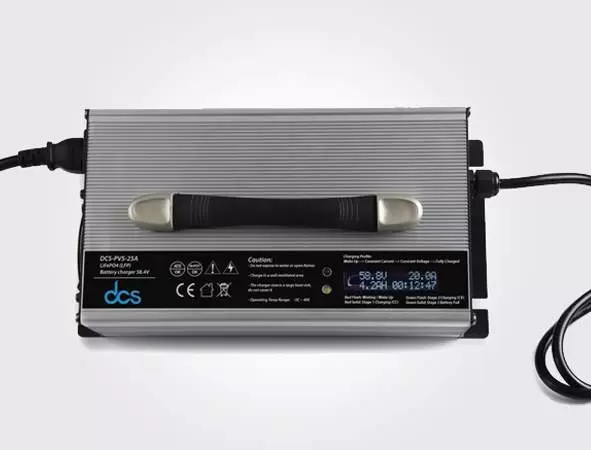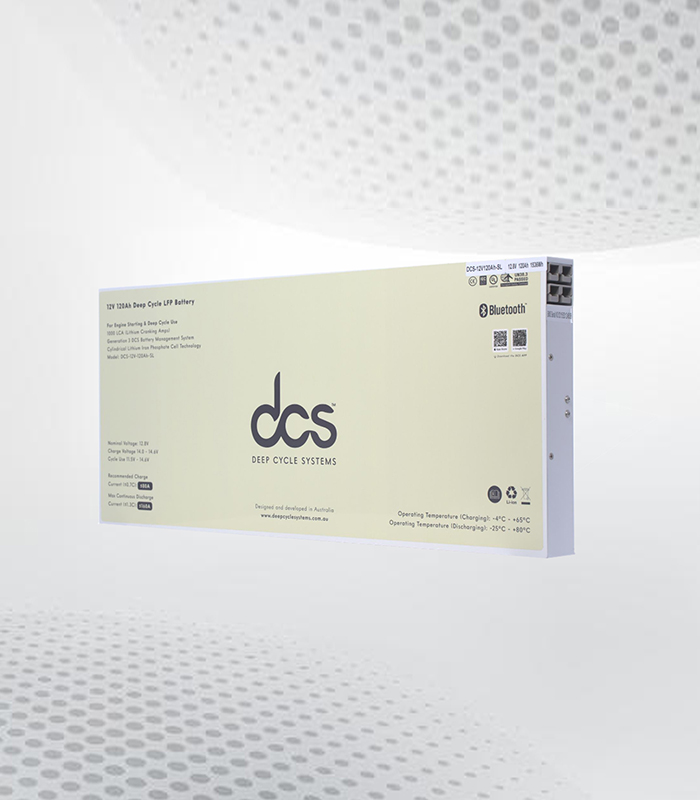In today’s eco-conscious world, solar battery chargers have become increasingly popular. Among the various options available, the 2 Amp Solar Battery Charger stands out as a reliable choice for those looking to harness solar energy efficiently. Whether you’re using it for camping, maintaining your vehicle battery, or powering small devices, this guide will provide you with essential tips to maximise the efficiency of your 2-amp solar battery charger. Read on to discover how you can optimise your solar charging experience.
Table of Contents
Understanding the Basics of a 2 Amp Solar Power Charger
A 2 Amp Solar Power Charger is designed to charge a steady rate of 2 amps per hour. It is an ideal solution for small to medium-sized batteries commonly found in vehicles and recreational devices. These chargers are lightweight and portable, allowing for easy setup at home and on the go.
Understanding the specifications and limitations of your charger is crucial for optimal performance. While a 2 amp charger is excellent for maintaining and slowly charging batteries, it ensures a gradual and safe charging process, helping to extend battery life and prevent damage.
Maximising Efficiency with a 12 Solar Battery Charger
To integrate a 2 Amp Solar Power Charger with a 12-volt solar battery system:
- Ensure voltage compatibility and maintain safe and efficient charging.
- Use the 12-volt charger to sustain a consistent voltage level, thus avoiding scenarios of overcharging or undercharging.
- Position solar panels optimally to capture maximum sunlight and clean them regularly to prevent dust accumulation, which can hinder performance.
- For enhanced efficiency, consider incorporating a charge controller to regulate voltage and safeguard the 12 Solar Battery Charger health, ensuring the longevity of both the charger and the battery.
High Power Output with a 10 Amp Solar Battery Charger
While a 2 Amp Solar Power Charger is perfect for gradual charging, a 10 amp solar battery charger offers a higher current that enables quicker charging for larger batteries. This higher power output can significantly reduce charging time, making it a suitable choice for applications where speed is essential. However, ensuring your battery can handle the increased current is crucial to prevent potential damage.
Always refer to the manufacturer’s guidelines for safe operation and to avoid overloading the battery, thus ensuring that you’re charging process remains efficient and secure. In addition to consulting the guidelines, regularly inspect your solar charger and battery connections for any signs of wear or corrosion. Keeping your equipment in good condition will help maintain optimal performance and prolong the lifespan of your charging system.
Practical Tips for Efficient Charging
Optimising the performance of your 2 Amp Solar Power Charger requires careful attention to both placement and maintenance. Implementing a few straightforward practices can significantly enhance its efficiency, leading to a more reliable power source for your solar battery system.
Positioning for Maximum Sunlight
Position your solar panels to face direct sunlight throughout the day for optimal efficiency. This ensures they receive the maximum amount of solar energy, enhancing their ability to charge your battery effectively. Avoid placing them in shaded areas; even partial shade can greatly reduce their performance.
Regular Cleaning
Maintaining clean solar panels is crucial for efficient charging. Regularly clean the panels to remove dust, dirt, and debris obstructing sunlight and hindering performance. A simple wash with water and a soft cloth can keep them functioning optimally.
Monitoring Temperature
Keep an eye on the battery’s temperature to prevent overheating, as excessive heat can damage the battery and affect charging efficiency. If you notice any overheating, consider relocating the panels to a cooler area or providing shade during the hottest parts of the day.
Charge Controller Usage
Incorporating a charge controller into your setup can help regulate voltage and prevent overcharging, ensuring the longevity of your battery.
By following these maintenance practices, you will enhance the charging performance of your 2 Amp Solar Power Charger, ensuring a reliable and efficient power source for your solar energy needs.
The Benefits of a 12 Volt DC Solar Battery Charger
A 12-volt DC solar battery charger is essential for anyone relying on solar energy to power various devices. These chargers offer flexibility and efficiency when used in automotive, marine, or off-grid systems.
Versatility across Applications
This type of charger is designed to support standard lead-acid batteries, making it an ideal choice for multiple applications. From charging car batteries to powering boats and RVs, its adaptability ensures that users can easily maintain their devices.
Optimal Charging Rates
One key benefit of a 12 Volt Dc Solar Battery Charger charger is its ability to provide optimal charging rates. These chargers enhance battery performance by ensuring the correct voltage is delivered, leading to increased efficiency and prolonged lifespan.
Preventing Overcharging and Undercharging
A steady 12-volt output is crucial for battery health. Solar battery chargers maintain a consistent voltage to minimise the risks of overcharging or undercharging. This safeguarding feature is vital, as both conditions can lead to battery damage and decreased operational efficiency.
Eco-Friendly Power Solution
Solar energy for charging supports battery longevity and contributes to a more sustainable lifestyle. By harnessing renewable energy, users can reduce their reliance on fossil fuels while keeping their devices fully powered.
In conclusion, a 12-volt DC solar battery charger is an indispensable tool that offers versatility, optimal performance, and environmental benefits for various applications.
Ensuring Compatibility with Your Solar Battery System
To ensure compatibility, it is essential to examine your battery’s specifications, including its type, capacity, and voltage, and compare them with those of your solar battery charger. Confirm the charger’s output aligns with your battery requirements to avoid inefficient charging or potential damage. Additionally, review any manufacturer recommendations regarding compatibility to safeguard the charger and battery’s performance and longevity.
This careful equipment matching ensures optimal performance and prevents issues arising from mismatched specifications. Moreover, familiarising yourself with the installation and operational instructions provided by the manufacturer can greatly enhance your understanding and use of the system. Properly following these guidelines can lead to more efficient energy utilisation and prolong the lifespan of your solar battery setup.
Enhancing Performance with Regular Maintenance
Regular maintenance is vital for the optimal performance of your solar battery charger. Periodically clean the solar panels to ensure they receive maximum sunlight, removing any dust and dirt that may accumulate. Inspect all connections and cables for signs of wear or damage, replacing them as necessary to maintain efficiency.
Check for corrosion around battery terminals and clean them if needed. Keeping the charger and battery in a well-ventilated area helps prevent overheating, which can impair performance. By diligently maintaining your equipment, you can enhance the efficiency and reliability of your solar charging system, ensuring a consistent power supply.
Additionally, monitoring the charge levels regularly and avoiding overcharging is beneficial, as this can lead to reduced battery lifespan. Investing in a protective cover for your solar panels can safeguard them against adverse weather conditions, further extending their durability and performance.
Ensuring the Longevity of Your Solar Battery
Maintaining the longevity of your solar battery is essential for maximising efficiency and ensuring a reliable energy source. Here are key practices to help you prolong its lifespan:
- Avoid Complete Discharges: Regularly recharging your solar battery is crucial. Complete discharges can significantly reduce its lifespan, so aim to keep the charge between 20% and 80%.
- Store in a Cool, Dry Environment: Store the battery in a cool and dry place when not in use. Extreme temperatures can damage the battery and reduce its effectiveness.
- Implement a Battery Management System: This system helps monitor the battery’s health, preventing deep discharges and maintaining optimal conditions. It can alert you to issues before they become critical.
- Keep Terminals Clean: Regularly inspect and clean battery terminals to prevent corrosion. Dirty terminals can impede performance and lead to inefficient charging.
- Ensure Proper Ventilation: Store the battery in a well-ventilated area to prevent overheating. High temperatures can accelerate wear and reduce overall capacity.
- Conduct Regular Inspections: Schedule routine checks to assess the battery’s condition. Early detection of issues allows for timely maintenance, ensuring your battery remains functional for a long time.
By following these practices, you can ensure your solar battery operates efficiently, ultimately saving you money and providing reliable power for your energy needs.
Troubleshooting Common Issues with Solar Battery Chargers
Troubleshooting common issues with solar battery chargers often involves addressing slow charging, inconsistent power output, and malfunctioning components. Begin by inspecting all connections for looseness or corrosion and ensuring the solar panels are optimally positioned for maximum sunlight. Please verify that the charge controller functions correctly by checking its settings and indicators.
If you experience slow charging, ensure no obstructions block sunlight, and the panels are clean. Inconsistent power output may result from damaged cables or connectors, so examine these thoroughly. Consult the manufacturer’s troubleshooting guide or seek professional assistance if issues persist. Proper maintenance and regular checks can preempt many common problems, ensuring your charger operates efficiently and reliably throughout its lifespan.
Portability and Convenience with a Portable 12 Volt Solar Battery Charger
Portable 12 Volt Solar Battery Charger offer unmatched flexibility, ideal for charging batteries in various locations such as at home, during road trips, or in remote areas. These chargers are designed to be lightweight, often featuring foldable solar panels for easy transportation and setup. Their versatility makes them perfect for travellers and outdoor enthusiasts who require a dependable power source.
Additionally, portable chargers typically come with various connectors and adapters, making them compatible with multiple devices. This convenience ensures you can maintain power to your batteries regardless of location, supporting multiple applications from camping gear to emergency backup systems.
Conclusion
A 2 Amp Solar Battery Charger can be an efficient and eco-friendly solution for maintaining power in your devices and vehicles. By understanding its capabilities and implementing best practices for setup, maintenance, and compatibility, you can maximise its performance and extend the life of your battery. Regularly monitoring and caring for your charger and battery will ensure a reliable power source, whether you enjoy the great outdoors or ensure your vehicle is always ready to go. Your solar charging experience can be effective and sustainable with the right approach.
FAQs
How long does charging a battery with a 2 Amp Solar Battery Charger take?
The charging time of 2 Amp Solar Battery Charger depends on the battery’s capacity and the amount of sunlight the charger receives. For example, a 50Ah battery may take approximately 25 hours of direct sunlight to charge fully.
Can I use a 2 Amp Solar Power Charger for any battery?
A 2-amp solar charger is typically compatible with lead-acid batteries, including flooded, gel, and AGM types. However, always check your battery specifications to ensure compatibility.
What happens if I connect my battery to a charger with a higher amp rating?
Connecting a battery to a charger with a higher amp rating can lead to overcharging, overheating, or damaging the battery. Matching the charger’s output with the battery’s requirements is essential.
Do I need a charge controller with a 2 Amp Solar Power Charger?
While it’s not always necessary, using a charge controller is highly recommended. It helps regulate the voltage and current flowing to the battery, preventing overcharging and enhancing battery life.
How can I improve the efficiency of my solar battery charger?
To improve efficiency, ensure the solar panels are clean and positioned to capture maximum sunlight. Regular maintenance, avoiding shading, and using a charge controller can enhance performance.
| Related Business Listings |
| Contact Directory |
| Local Business Profiles |




